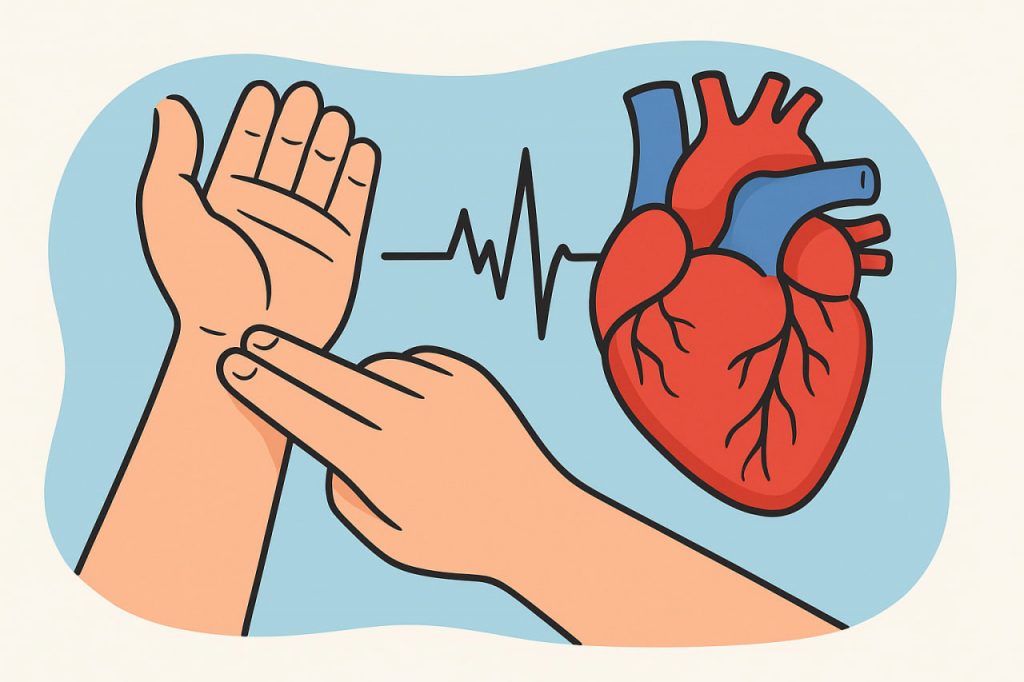A pulse is the rhythmic beating of the arteries caused by the heart pumping blood through the body. Measuring pulse is one of the simplest and most effective ways to assess cardiovascular health. A healthy pulse indicates that the heart is functioning properly and supplying the body with the oxygen and nutrients it needs.
Normal Pulse Range
The normal pulse rate depends on age, activity level, and individual health. For most healthy adults at rest, a normal pulse is between 60 and 100 beats per minute (bpm).
- Children (6–15 years): 70–100 bpm
- Adults (16+ years): 60–100 bpm
- Well-trained athletes: sometimes as low as 40–60 bpm at rest, which can still be healthy.
Factors That Influence Pulse
A person’s heart rate can change throughout the day depending on many factors:
- Physical activity – exercise increases pulse as the heart pumps more blood.
- Emotions – stress, anxiety, or excitement can raise heart rate.
- Temperature – heat often makes the heart beat faster.
- Medications and health conditions – some drugs or illnesses can increase or lower heart rate.
- Fitness level – regular exercise usually lowers resting pulse over time.
Signs of an Unhealthy Pulse
- Tachycardia – a resting pulse consistently above 100 bpm.
- Bradycardia – a resting pulse consistently below 60 bpm (excluding athletes).
- Irregular pulse – skipping beats or uneven rhythm, which may suggest arrhythmia.
If these signs are persistent, it’s important to consult a doctor, as abnormal pulse can indicate underlying heart or thyroid problems.
How to Check Your Pulse
The pulse is easiest to feel where arteries are close to the skin:
- On the wrist (radial pulse).
- On the neck (carotid pulse).
- On the chest or upper arm.
Count the beats for 30 seconds and multiply by 2 to get beats per minute.
Maintaining a Healthy Pulse
- Regular physical activity strengthens the heart.
- Balanced nutrition supports cardiovascular function.
- Avoiding smoking and alcohol reduces stress on the heart.
- Managing stress through relaxation and good sleep keeps heart rhythm stable.
Conclusion
A healthy pulse is a key indicator of overall well-being. For most adults, 60–100 bpm at rest is normal, with variations depending on activity and fitness. Monitoring your pulse helps detect early signs of cardiovascular issues and supports a heart-healthy lifestyle.
Glossary
- Pulse – the rhythmic throbbing of arteries as blood is pumped by the heart.
- Beats per minute (bpm) – a measure of heart rate.
- Tachycardia – an abnormally fast resting heart rate.
- Bradycardia – an abnormally slow resting heart rate.
- Arrhythmia – irregular heart rhythm.


